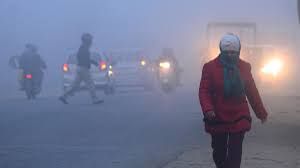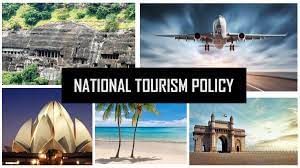UPSC Daily Current Affairs- 1st January 2023 | Current Affairs & Hindu Analysis: Daily, Weekly & Monthly PDF Download
| Table of contents |

|
| GS-I |

|
| GS-II |

|
| GS-III |

|
| Project Nilgiri Tahr |

|
GS-I
Cold Wave
Context
Recently Indian Metrological Department (IMD) has forecasted severe cold wave conditions in some parts of Punjab, Haryana, Chandigarh, Delhi, north Rajasthan, Himachal Pradesh and Uttarakhand.
About Cold Wave:
- It is a condition signify a certain amount of fall of temperature at given places with respect to climatological value.
- In India, cold waves are seen between November to March.
- However, minimum temperatures drop below 8°Cover many parts of northern India during the months of November to February.
- Impact on human health: It varies from Cough and cold, bronchitis and respiratory diseases, Blood pressure issues, Skin problems, and even Bone, joint, and muscle pain due to lack of sunlight.
Criteria for Cold Wave by IMD:
- It is considered when the minimum temperature of a station is 100°C or less for plains and 0°C or less for Hilly regions.
- Based on Departure
- Cold Wave: Negative Departure from normal is 4.5°C to 6.4°C
- Severe Cold Wave: Negative Departure from normal is more than 6.4°C
- Based on Actual Minimum Temperature (For plain stations only)
- Cold Wave: When minimum temperature is ≤ 04°C
- Severe Cold Wave: When minimum temperature is ≤ 02°C
- When minimum temperature departure is -4.5°C or less over a station, “Cold Wave” may be described if the minimum temperature is 150°C or less.
Factors responsible for cold wave in India:
- Build-up of a ridge (an extended area of relatively high atmospheric pressure) in the jet stream over northwest Asia.
- Movement of cold air masses in response to steering by upper-level winds.
- Formation of surface high-pressure over north & central India.
- Triggering mechanism like a strong westerly wave approaching northwest India to enhance winds for transport cold air south eastward.
- Extensive snow covers over northwest Himalayas.
Source: Indian Express
Kalasa-Banduri Project
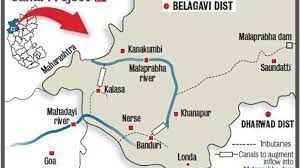
Context
The Govt of India recently approved Karnataka’s Kalasa-Banduri drinking water project which is facing opposition from Goa and Maharashtra.
- The Central Water Commission (CWC) has cleared the diversion of 1.72 TMC of water from the Kalasa Dam and 2.18 TMC from the Bhandura dam.
About Kalasa – Banduri Project:
- It is a dam that has been designed to divert water from the Mahadeo basin to the deficit basin of the Mala-Prabha river.
- The plan is aimed at facilitating drinking water for 13 towns in drought-hit northern Karnataka.
- The areas include Dharwad, Belagavi, Bagalkot and Gadag among others.
- These areas together make up the country’s second most arid region after Rajasthan.
About Mahadayi River:
- The Mahadayi river rises in Karnataka (Western Ghats) from the Bhimgad Wildlife Sanctuary in Khanapur taluk of Karnataka’s Belagavi district.
- Flowing westward, it enters the north Goa districts.
- Several streams join the flow of the river to form the Mandovi which is one of two major rivers that flow through Goa.
- It joins the Arabian Sea at Panaji.
- Distribution: Of the total area, 375 sq km lies in Karnataka, 77 sq km in Maharashtra and remaining 1580 sq km is in Goa.
About Central Water Commission (CWC):
- Central Water Commission is a premier Technical Organization of India in the field of Water Resources and is presently functioning as an attached office of the Ministry of Jal Shakti, Department of Water Resources, River Development and Ganga Rejuvenation, Government of India.
- The Commission is entrusted with the general responsibilities of initiating, coordinating and furthering in consultation of the State Governments concerned, schemes for control, conservation and utilization of water resources throughout the country, for purpose of Flood Control, Irrigation, Navigation, Drinking Water Supply and Water Power Development.
- It also undertakes the investigations, construction and execution of any such schemes as required.
- Central Water Commission CWC is headed by a Chairman, with the status of Ex-Officio Secretary to the Government of India.
- The work of the Commission is divided among 3 wings namely, Designs and Research (D&R) Wing, River Management (RM) Wing and Water Planning and Projects (WP&P) Wing.
- A separate Human Resources Management Unit headed by a Chief Engineer, deals with Human Resources Management or Development, Financial Management, Training and Administrative matters of the CWC.
- National Water Academy located at Pune is responsible for training of Central and State in-service engineers and it functions directly under the guidance of Chairman.
- Altogether there are Nineteen organizations located at headquarters in New Delhi and thirteen organizations spread over various locations in India.
Source: The Hindu
GS-II
City Finance Rankings 2022 and City Beauty Competition
Recently, Ministry of Housing and Urban Affairs has launched 2 key initiatives: City Finance Rankings 2022 and City Beauty Competition.
About City Finance Rankings 2022
- To evaluate, recognize and reward urban local bodies (ULBs) on basis of their strength across 15 indicators and 3 financial parameters: resource mobilization, expenditure performance and fiscal governance systems.
- Evaluation will be done on the basis of quality of current financial health and improvement with time in financial performance.
- Cities will be ranked at national level on the basis of their scores under following four population categories-
- Above 4 million.
- Between 1-4 million.
- 100K to 1 million.
- Less than 100,000.
- Top 3 cities in each population category will be rewarded.
- It will help ULBs to identify areas in their financial performance where they can make improvements and able to deliver quality infrastructure and services to its citizens.
- Rankings will motivate city/state officials and decision makers, to implement municipal finance reforms.
About City Beauty Competition:
- To encourage and recognize transformational efforts made by cities and wards in India to create beautiful, innovative and inclusive public spaces.
- Wards and public places of cities would be judged against five pillars-
- Accessibility
- Amenities
- Activities
- Aesthetics and
- Ecology
- Most beautiful public places in cities would be awarded first at State level and then will be shortlisted for award at the National level.
- It will encourage urban local bodies to improve their basic infrastructure and make urban spaces beautiful, sustainable and inclusive.
- Participation in the City Beauty Competition is voluntary.
Source: PIB
National Tourism Policy
Recently, a Report of the Department-related Parliamentary Standing Committee on Transport, Tourism and Culture was released.
- National Tourism Day is celebrated across the country on January 25 every year to appreciate India’s beauty and spread awareness about the importance of tourism and its impact on the economy.
- This year’s theme: for National Tourism Day is ‘Rural and Community Centric Tourism’.
- The central government is organizing the main event in Telangana’s Pochampally village, a weavers’ hamlet on the outskirts of Hyderabad.
- Known for its famous hand-woven Ikat sarees, Pochampally was selected as one of the best tourism villages by the United Nations World Tourism Organization (UNWTO) in 2021.
Tourism sector in India
- Travel and Tourism in India was the largest service industry: and was worth $234 bn in 2018.
- According to The World Travel and Tourism Council (WTTC): the tourism industry in India generated $194 bn or 6.8% of India’s GDP in 2019.
- The tourism sector in India: is predicted to grow at an annual rate of 6.9% to $460 bn by 2028 which is 9.9% of GDP.
About National Tourism Policy:
- As per the draft National Tourism Policy, five key areas would be given significant focus in next 10 years that are:
- green tourism
- digital tourism
- destination management
- skilling the hospitality sector and
- supporting tourism-related MSMEs.
- It include ‘perceptions related to safety and security’, and weak engagement between the Centre and the states.
- Government has also identified factors that hamper the growth of the tourism sector in the country.
- It also mentions ‘the menace of touts’ and ‘low standards of cleanliness and hygiene’ as other factors that deter the industry from leveraging its full potential.
- To promote investment in the tourism sector, draft mentions granting of industry status to the sector, along with formally granting infrastructure status to hotels.
- The draft policy offers framework conditions to help this sector, especially in the wake of the pandemic.
Key recommendations of committee:
National Tourism Council (NTC):
- Government should create National Tourism Council (NTC) on the model of GST council.
- Aim: To give recommendations to the Central and State governments on various issues of the tourism sector and its stakeholders.
Tourism, Travel and Hospitality sector:
- Spending Capex above Rs. 25 crores will reduce operating costs for hospitality players through subsidized rates of electricity and water charges, property tax, development tax etc.
- It will also attract investments in the Sector.
- It praises eight States Maharashtra, Gujarat, Madhya Pradesh, Kerala, Karnataka, Punjab, Rajasthan and Uttarakhand which have accorded industry status to hospitality projects.
- Tourism in Concurrent List:
- It recommended to include Tourism in concurrent list.
- It will help in simplifying issues of the pandemic-hit Indian tourism sector since tourism is a multi-sectoral activity.
- It raised concerns over delay in final UC (Utilization Certificate) submission in project.
- It includes projects like “Infrastructure Development at Puri, Shree Jagannath Dham-Ramachandi-Prachi River front at Deuli under Mega Circuit” of the PRASHAD Scheme and Integrated Development of tourist circuit around specific themes (SWADESH DARSHAN) has been pending since 2015.
- It recommends Ministry to identify the issues causing delay in payment of various expenditure items with the ITDC (India Trade Development Corporation).
Facts about India Tourism:
- The country is home to 40 UNESCO heritage sites: The last site to be added to the World Heritage Site list is Dholavira, a Harappan city that is located in the city of Gujarat.
- The country currently has 32 cultural sites, 7 natural sites, and one mixed property.
- India’s most organic state: The Himalayan state of Sikkim has come out as the most organic state in present day India. The state reportedly has some 47.3% under forest cover.
- Highest Rail Bridge in the world: The country is home to the highest rail bridge in the world. The 1,315 m long Chenab Bridge is located in Jammu and Kashmir, and is 35 m higher than the Eiffel Tower.
- One of the most untouched places on earth: India’s North Sentinel Island is one of the most untouched places in the world. The island is home to the Sentinelese people, who have isolated themselves from the world.
- The oldest fort in India: Himachal Pradesh’s Kangra Fort is said to be the oldest in the country. It used to be home to royal treasures, and is said to have been built 3500 years ago.
- Wildlife sanctuaries: The country has a total of 566 wildlife sanctuaries. Ranthambore National Park in Rajasthan is the largest wildlife sanctuary in the country.
- Cleanest village in Asia: Mawlynnong located in the state of Meghalaya is ranked as the cleanest village in Asia.
Challenges Associated with Tourism sector in India:
- The tourism industry has been heavily hit by the coronavirus disease (Covid-19) pandemic: The World Tourism Organization has said that tourist arrivals around the world are not expected to return to their pre-pandemic levels until 2024.
- Fear of Uncertainty: Due to the spread of coronavirus and enforcement of social distancing norms peoples are fearing and unwillingness to come out from their home.
- Lack of arrival of international tourists: International traveling was banned by most of the countries to control the spreading chain of coronavirus. Therefore, the Indian tourism sector got a smaller number of tourists as compared to earlier and no foreign exchange earnings.
- Business Hurdles, Lack of Hygiene and Comfortable accommodation: During COVID-19, restrictions laid down by the government to control outstretch of coronavirus impacted on most tourists and tour operators to get adequate business.
- Revenue loss during COVID-19: People are not ready to go outside of their home and they are not willing to take tours. Due to closure of tour destinations, monuments, heritage sites and lack of arrival of tourists the Indian tourism projected a revenue loss of Rs. 1.25 trillion.
- Tour operators have shut down their business: the majority of registered and unregistered tour operators closed their operations in India; hence it affected much on profitability and productivity of the Indian tourism industry.
- Lack of integrated tourism promotion: Promotional activities are barred due to the spread of COVID-19 and there is no benefit of promotion of tourism during COVID-19.
- Loss of productivity and Profitability: Indian tourism industry was thoroughly put to a stop to their services. Therefore there is no productivity of the tourism activities and profitability.
Government of India’s recent Initiatives:
- Development of tourist’s circuit around specific themes (SWADESH DARSHAN):
- Ministry should take the advantage of the regional, national and international linkages developed in North Eastern States so far in the tourism front.
- All the states and UT/s should be given the exact same amount as per its budgeted allocation.
- The Tourism Ministry has launched the Incredible India Tourist Facilitator Certification (IITFC) portal.
- It is an online programme where one can learn about tourism at their own time, space, path and pace.
- The successful completion of this programme would enable the learner to become a Certified Tourist Facilitator of Ministry of Tourism, government of India.
- Facilitative visa regime is a prerequisite for increasing inbound tourism.
- Ministry of Tourism takes the initiative with Ministry of Home Affairs and Ministry of External Affairs for achieving the same.
- The “Incredible India 2.0” Campaign of the Ministry marks a shift from the generic promotions being undertaken across the world to market specific promotional plans and content creation.
- Recently, in order to promote night tourism, the Culture Ministry has decided to open 10 historical monuments till 9 PM for common visitors across the country.
- Further, it urged all the states and UTs to open their important monuments till late night for visitors.
- Government promotes states to organize surveys in their respective states to understand how the foreign tourists perceive India and should work towards removing negative impressions.
- This will lead to change the perception of India in the mind of foreign tourists which will yield us good results for promotion of tourism.
Way Forward:
As a travel destination, few other nations can offer the diversity of products and experiences found in India. The travel and tourism industry offers significant opportunity for fulfilment of key national growth imperatives including employment generation across all regions of the country, and growth in the sector can contribute to overall economic development in the country. However, tourism in India, though growing consistently, is yet to realize its full potential due to several challenges that plagued the sector. Alleviation of these challenges will be essential for the industry to realize its full potential.
Source: The Hindu
GS-III
Project Nilgiri Tahr
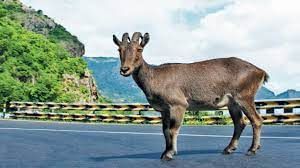

Context
Recently the Tamil Nadu government launched an initiative for the conservation of the Nilgiri Tahr.
About Nilgiri Tahr:
- The species is locally known as Varaiaadu.
- There are multiple references to the Nilgiri Tahr in Tamil Sangam literature dating back to 2,000 years.
- The late Mesolithic (10,000-4,000 BC) paintings highlight the significance of the Tahr in folklore, culture and life.
- It was designated as the State animal of Tamil Nadu in recognition of its ecological and cultural significance.
- IUCN Status: It has been listed as an endangered species and is protected under Schedule-I of the Wildlife (Protection) Act of India, 1972.
- Habitat and Distribution:
- The animal inhabits meadows with steep cliffs at elevations between 300 metres and 2,600 metres above sea level.
- Historically, the Nilgiri Tahr was known to inhabit a large portion of the Western Ghats.
- But today it remains restricted to a few scattered patches in Tamil Nadu and Kerala.
- It has become locally extinct in around 14% of its traditional shola forest-grassland habitat.
- Population: It is estimated that there are 3,122 Nilgiri Tahrs in the wild.
- October 7 will be celebrated as ‘Nilgiri Tahr Day’ in honour of E.R.C. Davidar.
- He was responsible for pioneering one of the first studies on Nilgiri Tahr in 1975.
Source: The Hindu
Ethylene Glycol
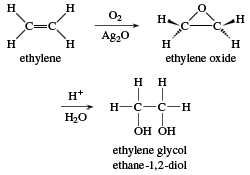
Context
A day after Uzbekistan alleged 18 child deaths in Samarkand from consumption of a medicinal syrup manufactured by an Indian drugmaker.
- The Department of Chemicals and Petrochemicals with the Ministry of Chemicals and Fertilizers issued a gazette notification titled Ethylene Glycol (Quality Control) Order, 2022 on December 29.
About Ethylene glycol:
- Ethylene glycol is a colourless and odourless alcoholic compound that can be fatal if consumed.
- It is mostly used as an automotive antifreeze and as a raw material for manufacturing polyester fibres.
- Diethylene glycol and ethylene glycol are adulterants that are sometimes illegally used as solvents in liquid drugs.
- Diethylene glycol and ethylene glycol may be used by pharma companies as an alternative to non-toxic solvents such as glycerine or propylene glycol to cut costs.
- It is also found in several products such as:
- hydraulic brake fluids
- stamp pad inks
- ballpoint pens
- solvents, paints
- cosmetics
- plastics.
About Marion Biotech:
- Marion Biotech is a drug company based in Noida, Uttar Pradesh.
- It is a licensed manufacturer and holds a licence for manufacturing of Dok1 Max syrup and tablets for export purposes granted by UP Drug Control.
- Marion Biotech does not sell Dok-1 Max in India and its only export has been to Uzbekistan.
Details of the Ethylene Glycol (Quality Control) Order, 2022:
- The order came after the Centre consulted the Bureau of Indian Standards on the matter.
- Certification and enforcement authority:
- In respect of specific goods or articles, the Bureau of Indian Standards shall be the certifying and enforcing authority.
- Penalty:
- Any person who contravenes the provisions of this Order shall be punishable under the provisions of the said Act.
Source: DownToEarth
|
38 videos|5293 docs|1118 tests
|
FAQs on UPSC Daily Current Affairs- 1st January 2023 - Current Affairs & Hindu Analysis: Daily, Weekly & Monthly
| 1. What is the significance of Project Nilgiri Tahr in relation to the UPSC exam? |  |
| 2. What are the key objectives of Project Nilgiri Tahr? |  |
| 3. What is the role of the UPSC in the implementation of Project Nilgiri Tahr? |  |
| 4. How does Project Nilgiri Tahr contribute to biodiversity conservation in the Western Ghats? |  |
| 5. What are the future challenges for Project Nilgiri Tahr and its conservation efforts? |  |

